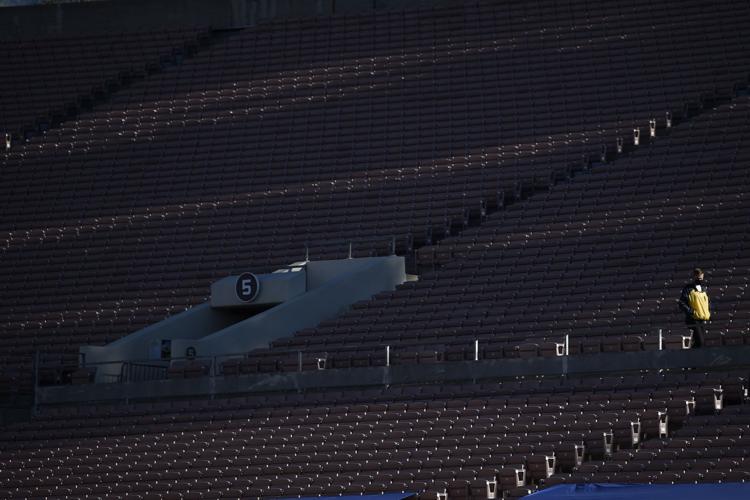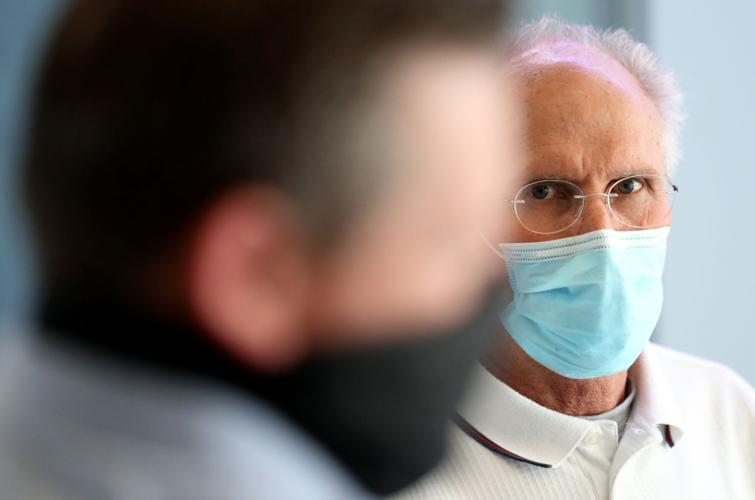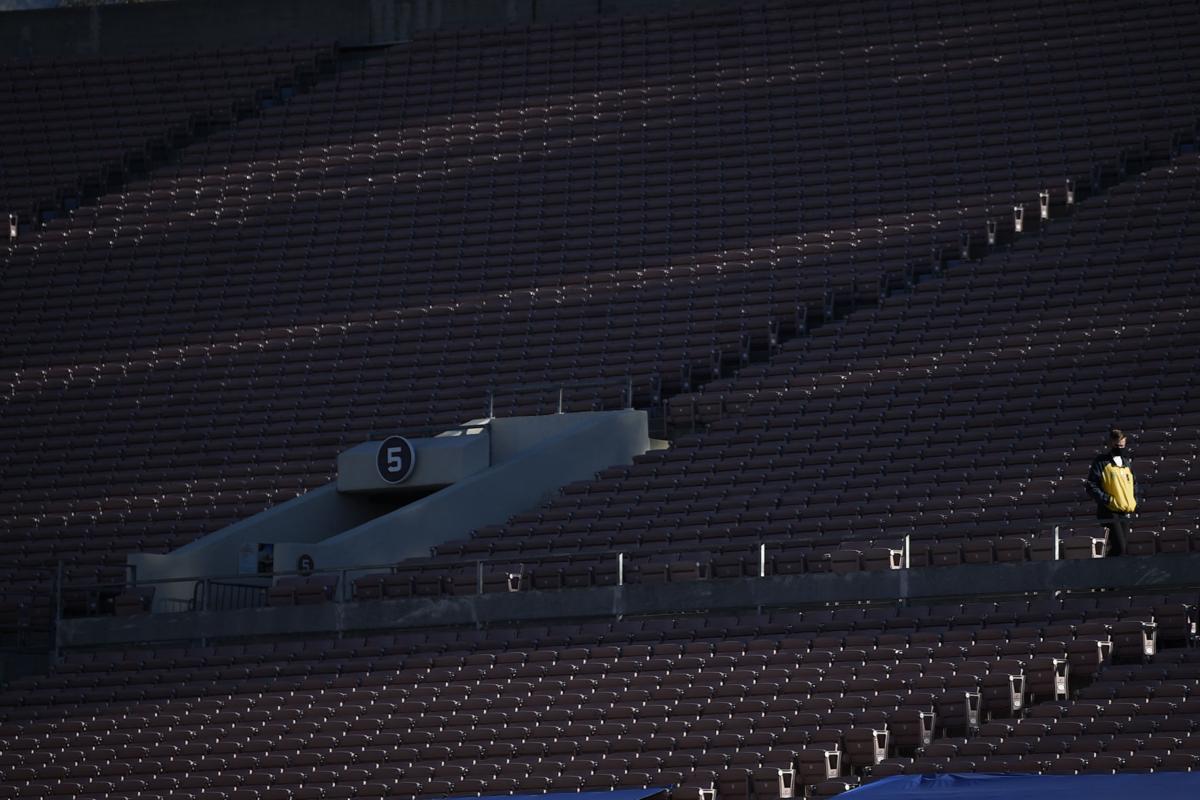Dear Mr. Football: Is the Rose Bowl showing its age?
A: At 98 this fall, the Rose Bowl stadium has undergone about $165 million in renovations in recent years. It’s not the oldest guy in the room. Washington’s Husky Stadium is celebrating its 100th birthday this week.
But there is one change in the Rose Bowl that is infuriating. The city of Pasadena accepted a $10 million donation from real estate tycoon Tod Spieker and now — ugh — jointly refers to the grand stadium as Spieker Field. It is even listed that way in the first line of UCLA’s weekly media releases.
That’s football blasphemy. That’s so wrong. The Rose Bowl is probably the most revered, most historic facility in college sports
You wouldn’t take a donation to put a rich guy’s name on Yankee Stadium or Lambeau Field or Madison Square Garden. The Rose Bowl is in that sort of untouchable company. Perhaps the football gods have affixed a curse onto UCLA’s football program, which would explain the Bruins’ decline nationally and the school’s failure to play in a Rose Bowl game for 22 years.
Dear Mr. Football: Can Arizona use the “we’re-so-young” excuse for its football slippage?
A: That’s one that won’t fly. The Pac-12 is the youngest league of the Power 5 conferences, by far.
The sports information directors of the five conferences shared roster data recently, listing each team’s number of freshmen and sophomores. Arizona was nowhere in the rankings of young programs. Surprisingly, Oregon has the youngest active roster of all Power 5 programs. Here’s the nationwide list as it pertains to the Pac-12:
1. Oregon, 81 freshmen/sophomores, or 74% of its roster;
4. Stanford, 73 freshmen/sophomores, or 72%;
6. UCLA, 85 freshmen/sophomores, or 71%;
9. ASU, 77 freshmen/sophomores, or 68%;
11. Utah, 80 freshmen/sophomores, or 67%;
12. Colorado, 69 freshmen/sophomores, or 65%.
The Wildcats list 59 freshmen and sophomores, including walk-ons and non-scholarship players, entering the UCLA game. That’s roughly 60% of their roster.

Dr. Stephen Paul, right, has kept the Wildcats safe — and playing — during the COVID-19 pandemic.
Dear Mr. Football: Does Arizona have anyone likely to make the All-Pac-12 team?
A: Given the peculiarities of the 2020 season, the league should create a space on its all-conference team for Dr. Stephen Paul, who has been the exemplary leader of the UA athletic department’s diligent hour-to-hour attempt to keep its athletes healthy and its teams out of quarantine.
The Pac-12 could list Paul under the position of “Incident Command.”
Paul is not even listed in the UA athletic department staff directory — he is technically under the UA Health Sciences umbrella — but athletic director Dave Heeke says Paul “is truly our director of sports medicine.”
Said Heeke: “Dr. Paul has taken a huge leadership role; he’s been outstanding. He really jumped all the way in and is becoming kind of a national and conference figure that people are looking to right now. He’s been able to pull everyone together, handling a huge undertaking and challenge with great expertise. His knowledge of our program, his background as a coach and athlete, has been a perfect fit.”
Dear Mr. Football: Is it possible Arizona could challenge the NCAA record for consecutive losses?
A: Not with NAU scheduled to play at Arizona Stadium on Sept. 18, 2021. But it’s fully realistic Arizona could finish this season 0-6, extending its losing streak to 13, and then lose to BYU and San Diego State before playing NAU next September. That would be 15 consecutive losses.
The Pac-12 record is 20, established by Oregon State in the 1980s. The NCAA record is 34, set by Northwestern from 1979-82. Arizona won’t get close to the Southwest record for consecutive losses. New Mexico State lost 27 straight games from 1988-90.
Good news on the horizon: For Arizona, there’s always woeful UTEP, which is to play in Tucson in September 2023.
Dear Mr. Football: How much does it cost for a road trip to play UCLA?
A: When Clemson traveled 400 miles to Florida State for what turned out to be an aborted game against FSU last week, Clemson athletic director Dan Radakovic said the Tigers spent about $300,000 — and claimed that FSU could’ve saved them the expense by being more forthcoming about its COVID-19 issues.
Arizona’s visit to UCLA covers about the same distance, so perhaps it is costing close to $300,000. That is offset somewhat by close to $5 million in media rights money distributed to the Pac-12 by Fox to broadcast Saturday’s game. That money is then split among 12 teams and league headquarters, or close to $400,000 per team.
Something as simple as ground travel has become more costly. Heeke said that the UA now requires six buses to get a team to and from a road game. That’s double the customary number of buses to and from the stadium and airport.
“We’ve curtailed our overall travel party,” said Heeke. “We only travel with our critical staff and support program. We’ve taken a hard look at what we really need. We don’t take guests with us, we’re not doing any donor events or entertaining anyone. It’s just a business trip.”
Dear Mr. Football: Is it possible Arizona could eat some of UCLA’s leftovers?
A: A few weeks ago, the Los Angeles Times reported that the Bruin football program spent $5.4 million last year for non-travel meals, more than four times greater than any other Pac-12 team. It didn’t seem like a wise expenditure: UCLA’s athletic department reported an $18.9 million deficit last year.
Through a public-records request, The Times obtained more than 500 pages of invoices and receipts of UCLA’s football menu selections. It wrote that a 2019 game-day menu included Guajillo chili chicken, coffee-braised brisket and pork chops smothered in candied apples and onions.
“During off-season workouts last year,” the Times reported, “UCLA spent more than $40,000 to import five barbecue meals from an Arizona-based restaurant. On other occasions, the program ordered hundreds of peanut-butter-and-jelly sandwiches from a Los Angeles caterer at $4.95 each.”
Is it paying off? The nutrition-blessed Bruins have gone 8-19 since coach Chip Kelly took command in 2017 and changed the team’s eating habits.
Dear Mr. Football: Has Arizona ever trailed by a greater margin than 37-0 in the third quarter as it did last week at Washington?
A: Unfortunately, yes.
Kevin Sumlin’s first UA team, 2018, fell behind Houston 38-0 in the third quarter and lost 45-18. That same UA team also fell behind Utah 35-0 in the third quarter and lost 42-20.
Rich Rodriguez is the UA’s 21st-century leader at falling into unrecoverable deficits. RichRod’s 2016 club fell behind Washington State 38-0 in the third quarter and lost 69-7. His 2015 team fell behind Washington 42-3 in the third quarter and lost 49-3.
And his 2012 team fell behind UCLA 42-3 early in the third quarter at the Rose Bowl, losing 66-10. Few have forgotten the emptiness when RichRod’s 2014 South Division champions fell behind Oregon 30-0 in the league title game, losing 51-13.
It’s difficult to imagine Arizona being so flat so early again this week. But beating the Bruins? Given the available manpower of Arizona’s defense, that’s a stretch.
UCLA 40, Arizona 27.






